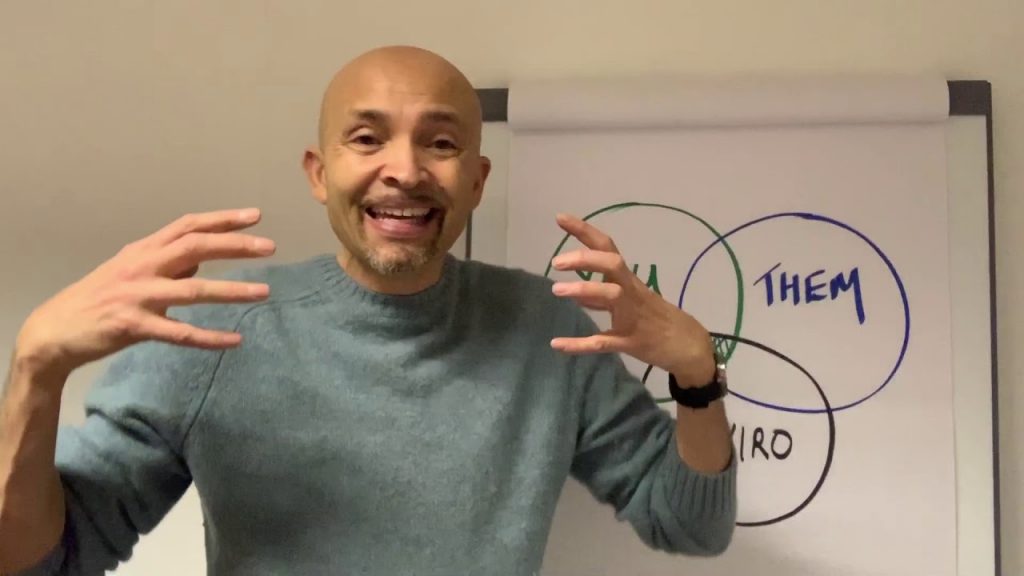Enhanced Transcribed:
Hey folks, it’s Dr Ro, I hope you’re well.
I wanted to tackle the subject because I think in the current climate, there are opportunities in the United Kingdom where certain markets are growing quite rapidly.
Prices are going up or above the asking price, part of this has been driven by the government incentives to do with the stamp duty delaying that and it’s beneficial for people to buy before that stamp duty exemption period ends.
So the market is pretty aggressive in that respect at the moment and along with that backdrop has come conversation which has come up in the past not suddenly come up now and that’s to do with refinancing properties.
I’m just sharing with you the facts about what happens when you do a refinance and just try and step back from it and look at it from a long-term perspective.
This is the first one, and that is to show that initially what we’ve got is the first of the smaller ones here, which is that one there that is your initial refinance. You’ve bought the property six months later you’ve done a refinance on it and the red represents the mortgage from the company, which is 75% of the market value and the green represents in that example the equity. The difference between the value of the property and the mortgage.
That’s 25% of that valuation, so you do that once you set maybe a fixed rate mortgage, maybe you don’t it’s a conversation to have with the broker. Now you’ve got your cash flow on a monthly basis and you may have extracted some of the capital you put into this deal. You may have extracted all of it depending on how that valuation came. Let’s fast forward two, three years or maybe shorter depending on how that market moved and we go to the second one here and that’s where the property has gone up in value. Now we’ve got an increased value of the property.
If you do nothing with it then just be mindful that I’ve got a couple lines so that top line there that dashed line represents the value of the property at the original valuation after refinance. I could put a line below that which is this little red area. It could be a second dashed line at the bottom of the green there, and that will remain the same. That would be your mortgage over that period if you do nothing. Meaning the hand here represents what the actual property is the mortgage is doing over that period you kept it the same.
In other words, if it is £100,000 property, £5000 mortgage it stays the same. When you refinance you’re basically increasing the level of borrowing on that property and the green represents the equity at that .25% in the property there. You’ve extracted everything out. In theory you’ve extracted the difference between that dashed line up to the red mortgage ends there that difference is what you’ve pulled out the property at that moment in time.
If you then wait another three, four, five, six, seven years and it goes again the values up to here, the top of that mortgage down to the red dashed line is effectively what you’re extracting out of that property in terms of gain as equity release. Why do people do it? Because they want to pull cash out of the property and use it for something else that’s the process that people go through if they keep refinancing.
Each time you do this your loan to value you’re putting in place remains higher so you’ve moved it from here. With a refinance each time at 75% your loan to value will be 75% there, 75% there and the second one 75% there. One, two and three in this example here each time whether its five years down the line will have 75% loan to value on that property.
Also because your mortgage has gone up, unless you significantly changed the strategy or increased that rental income coming in, the chances are the cash from the property will drop. Reason being, you’ve increased the mortgage the cost of borrowing on a monthly basis has now gone up, which in theory will drop your cash flow unless you happen to have shifted to a much lower interest rate mortgage and you’ve increased the rents on the properties at the top end coming in, minus that higher mortgage going out you’ve managed to maintain keep cash flow there. Most of the time it’s probably not the case if you’ve done a big shift in the mortgage.
Unless your rents have gone up and interest rates are really low, chances are your cash flows gone down. Also if you’re doing this in your own name that new mortgage interest on that mortgage if it’s in your own name is not a tax-deductible expense, because the new rules come out clause 24.
If someone does this in their own name on a large mortgage let’s say £9000 a year’s worth of interest that used to be tax deductible years ago, it’s not now in your own name, so that would effectively be a taxable figure. What happens if the market dips now? Price has gone up, equity release you’ve raised the mortgage and now the property price has come down and in this situation you are in negative equity, where as if the price came down from, say, £200,000, down to £180,000 here and you’re original price and mortgage was back here, you’ll have to come a huge way down before we go into negative equity.
Whereas the risk is of course here it does go into negative equity and if you hold it for long enough in theory it should come back up again, but it’s a question of if you want to put yourself in that position.
The last thing here is what’s your long-term view? Is your plan to build your portfolio, bring your loan to values down across your portfolio and that would be the case if you don’t refinance. Imagine this situation here where we’ve got £100,000 property here, £75,000 mortgage some point in the future now becomes a £200,000 property. If you maintain the old mortgage as it was here at 75,000, then you can start to see the loan to value changes dramatically.
So, for example, if the value is £150,000 and the mortgage is only £75,000 because you haven’t changed it, haven’t refinanced, then you have a 50% loan to value.
At some point in the future it could be that if you maintain that mortgage the same across here then the loan to value becomes 30% and from the banks perspective, especially if you’re a portfolio landlord overall if your loan to value across your portfolio is lower that does carry some weight and can give you some benefits from a lending perspective, particularly if you start going to look at properties. They may say your overall portfolio is a lot lower loan to value and because the risk profile is lower we’re happy to give you potentially a lower interest rate on some of these mortgages. It’s not a straightforward yes or no answer.
It depends on your long-term view. Do you want to bring your loan to values down?
Keep your cash flow going up? Do you want to have that huge amount of equity in the portfolio to give you some flexibility?
One of the things that can be done is secured lending against the equity in the property so it is more flexible, so instead of you refinancing the bank say your overall portfolio is at 50% value, you’ve got many thousands of equity we’re happy to give an open book type lend against another 300,000 that at this rate. That could be something to consider.
Do be thinking about the long-term plan here.
I have in the past when I started doing a couple of refinances back in the days 2002, 2003 and I regretted it later on. Mainly because we pulled that equities right up, we put those mortgages up the market had a bit of a smack during the recession, and it took a long time for some of those properties to crawl back up again. I did it at the time because I didn’t have a lot of capital and we were trying to squeeze money out.
I wouldn’t do it again. I would use a different approach this time round, so that’s just a personal observation on a few properties we had in the early days of the portfolio.
Dr Ro signing out.
Disclaimer: This video or written publication does not offer investment or financial advice and nothing in them should be construed as investment or financial advice. Our publications provide information and education only. The information contained in our publications is not, and should not be seen as a recommendation to use any particular investment strategy. Always seek financial advice from an independent financial adviser around your own personal financial situation.



